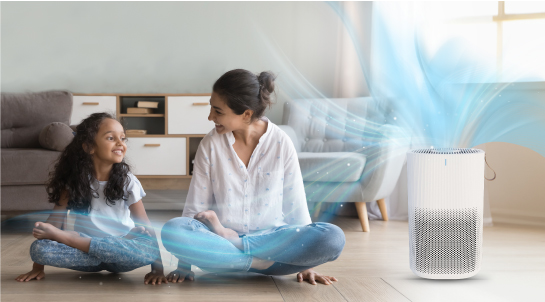Context:
Recently in times of rising pollution in Delhi, Aerosol scientists of IIT Delhi have discussed the importance of indoor air quality and air purifiers.
Sources of Indoor Air Pollution
Cooking: Cooking with solid fuels (wood, coal) releases harmful particulate matter, carbon monoxide, and other gases.
- Even with modern stoves, poor ventilation can cause toxic gases and pollutants to accumulate, making kitchens the most polluted spaces in homes.
Burning Incense/Candles: These activities release fine particles and volatile organic compounds, that further degrade indoor air quality.
Why it is Important to Monitor Indoor Air Quality?
- Indoor air quality (IAQ) plays a crucial role in mitigating the harmful effects of outdoor pollution, particularly PM2.5 particles, which are linked to respiratory diseases, cardiovascular issues, and neurological disorders.
- In many Indian cities, PM2.5 levels exceed the World Health Organization’s safe limits, making indoor air quality management essential for those who are working indoors and can afford it.
Ways to tackle Indoor Pollution:
- Improving indoor air quality is important but the root cause of air pollution lies in the poor quality of outdoor air. The solution lies in addressing both indoor and outdoor air pollution through comprehensive policies and collective action.
- Use formaldehyde-free products such as solid wood, gypsum board, stainless steel, adobe, bricks, and tile for construction or renovation when possible.
- Use high-emitting products like paint, glue, caulk, candles, and incense outdoors when possible, or increase ventilation when using products or engaging in activities indoors that may generate pollutants.
- Ventilation and shading can help control indoor temperatures. Ventilation also helps remove or dilute indoor airborne pollutants coming from indoor sources. This reduces the level of contaminants and improves indoor air quality.
- By using Air Purifiers: Using air purifiers in homes in particular rooms (bedrooms/living rooms) can significantly reduce exposure to indoor pollution.
How do Air Purifiers Work?
Air purifiers typically consist of a fan and a HEPA (High Efficiency Particulate Air) filter that captures PM2.5 particles.
Some purifiers come with sensors that adjust fan speed based on real-time air quality and that enhance efficiency.
Important Features:
- Clean Air Delivery Rate (CADR) measures how quickly the purifier can clean the air in a given space. A higher CADR is better for larger rooms.
- Activated carbon filters help remove gaseous pollutants, though not essential for particulate matter.

